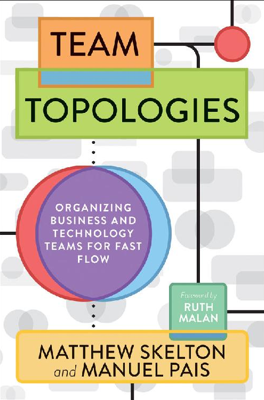Conclusion: The Next-Generation Digital Operating Model
The Next-Generation Digital Operating Model
The traditional approach to software delivery in most organizations is plagued by numerous issues including disengaged teams, architectural misalignments due to Conway’s Law, and inefficient reorganizations. These problems persist because organizations often have an outdated understanding of software development, focusing excessively on "feature delivery" without considering the underlying team dynamics or cognitive loads.
Foundations of Team Topologies
Team Topologies proposes a "team-first" approach that is structured around four fundamental team types—stream-aligned, platform, enabling, and complicated subsystem teams—and three core interaction modes—collaboration mode, X-as-a-Service mode, and facilitating mode. This structure emphasizes the importance of designing organizations that not only adhere to Conway’s Law but also support sustainable software architectures by effectively managing team sizes and responsibilities to avoid cognitive overload.
Strategic Implications of Team Topologies
Proper application of Team Topologies helps align the communication structure with the system design, promoting systems that are easy to manage and evolve. It suggests reformatting teams and adjusting communication flows to build systems that natural fit within the production environment and are easier to modify over time. This strategic alignment can prevent the common pitfalls of large designs that do not reflect the team's actual communication and operational workflows.
Adapting Organization Design for Sensing and Adaptability
Team Topologies is designed to be flexible and adaptive, meeting an organization's needs as they evolve. This adaptability is crucial for handling periods of technical and product discovery and moving mature technologies and products into stable, less collaborative frameworks to avoid inefficiencies.
Limitations and Additional Requirements for Success
Despite its comprehensive framework, Team Topologies by itself cannot ensure the effectiveness of an IT organization. A successful application also requires a healthy organizational culture that supports continuous learning, good engineering practices, sound financial management, and a clear business vision.
Practical Steps to Implement Team Topologies
The chapter concludes with practical steps for organizations looking to adopt Team Topologies:
Start with the Team: Focus on creating conditions where teams can operate effectively, manage cognitive loads well, and align closely with user needs.
Identify Suitable Streams of Change: Determine key streams that handle the most critical changes within the organization, aligning team efforts around these streams.
Develop a Thinnest Viable Platform: Build a support platform that is just sufficient to meet the needs of the streams, avoiding over-engineering.
Address Capability Gaps: Enhance capabilities in team coaching, mentoring, service management, and documentation to support the teams effectively.
Promote Understanding and Adoption of Team Interaction Modes: Educate and train the organization on the principles behind Team Topologies to facilitate a smoother transition to new ways of working.
By addressing these elements, organizations can not only optimize their software delivery capabilities but also create environments where technology and teams evolve synergistically towards more dynamic and effective models.
